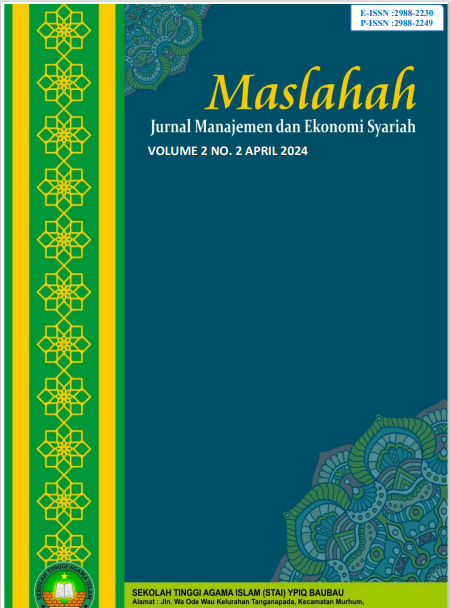Perbedaan Zakat, Infaq, Shadaqah, dan Waqaf serta Kedudukannya dalam Islam dan Mustahiqnya
DOI:
https://doi.org/10.59059/maslahah.v3i3.2530Keywords:
Zakat, Infaq, Shadaqah, Waqf, Mustahiq, Islamic EconomicsAbstract
Zakat, infaq, shadaqah, and waqf are important instruments in the Islamic economic system that aim to create social justice, wealth distribution, and public welfare. Although often understood overlappingly, each has different legal characteristics, distribution mechanisms, and beneficiaries (mustahiq). This article aims to outline the essential differences between the four instruments, examine their position in Islamic teachings, and explain the categories of beneficiaries. This study uses a descriptive qualitative approach with literature study as the main method. The results show that a comprehensive understanding of zakat, infaq, shadaqah, and waqf can improve the effectiveness of wealth distribution and social development of Muslims.
References
Ahmed, H. (2004). Role of Zakah and Awqaf in poverty alleviation. Jeddah: Islamic Development Bank, Islamic Research and Training Institute.
Al-Ghazali. (2005). Ihya Ulumuddin (Edisi revisi). Beirut: Dar al-Kutub al-‘Ilmiyyah.
Al-Mawardi. (2016). Al-Ahkam As-Sultaniyyah wa Al-Wilayat Ad-Diniyyah (Pemerintahan dalam Islam). Beirut: Dar al-Kutub.
Al-Qaradawi, Y. (2011). Fiqh az-Zakah (Vol. 1 & 2). Jeddah: King Abdulaziz University Press.
Bakar, M. D. (2008). Zakat, waqf, and sadaqah: Philanthropy in Islam. Islamic Economic Studies, 15(2), 1–25.
Chapra, M. U. (1992). Islam and the Economic Challenge. Leicester: The Islamic Foundation.
Dusuki, A. W. (2008). Banking for the poor: The role of Islamic banking in microfinance initiatives. Humanomics, 24(1), 49–66. https://doi.org/10.1108/08288660810851469
Haneef, M. A., et al. (2013). Integration of waqf and Islamic microfinance for poverty reduction: Case studies from Indonesia. ISRA International Journal of Islamic Finance, 5(1), 61–71.
Hasan, Z. (2010). An overview of the effectiveness of Islamic economic instruments: Zakah, waqf and Islamic microfinance. Kyoto Bulletin of Islamic Area Studies, 3(1), 1–15.
Ibn Kathir. (2003). Tafsir Al-Qur’an Al-Azim (Vol. 1–4). Beirut: Dar al-Kutub al-‘Ilmiyyah.
Ismail, A. G., & Possumah, B. T. (2013). Islamic philanthropy and sustainable development goals: The way forward. International Journal of Zakat, 1(1), 1–10.
Kahf, M. (2003). Waqf and Islamic Philanthropy. Jeddah: Islamic Research and Training Institute.
Nejatullah Siddiqi, M. (2004). Islamic Banking and Finance in Theory and Practice: A Survey of State of the Art. Islamic Economic Studies, 13(2), 1–48.
Obaidullah, M. (2008). Role of microfinance in poverty alleviation: Lessons from experiences in selected IDB member countries. Jeddah: Islamic Research and Training Institute.
Shihab, M. Q. (2013). Tafsir Al-Mishbah: Pesan, Kesan, dan Keserasian Al-Qur’an (Vol. 1–15). Jakarta: Lentera Hati.
Downloads
Published
How to Cite
Issue
Section
License
Copyright (c) 2025 Maslahah : Jurnal Manajemen dan Ekonomi Syariah

This work is licensed under a Creative Commons Attribution-ShareAlike 4.0 International License.







